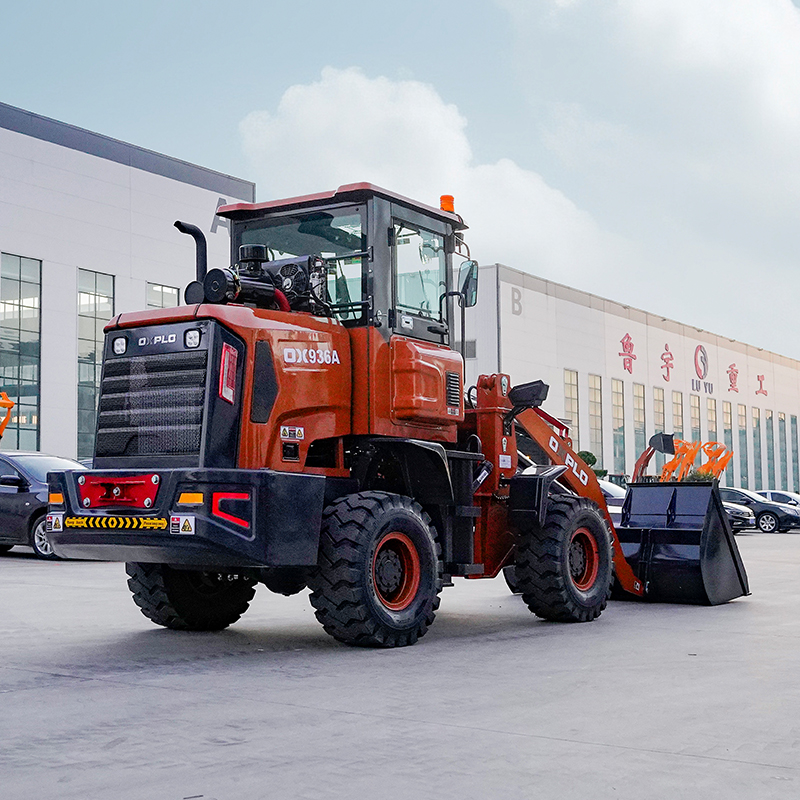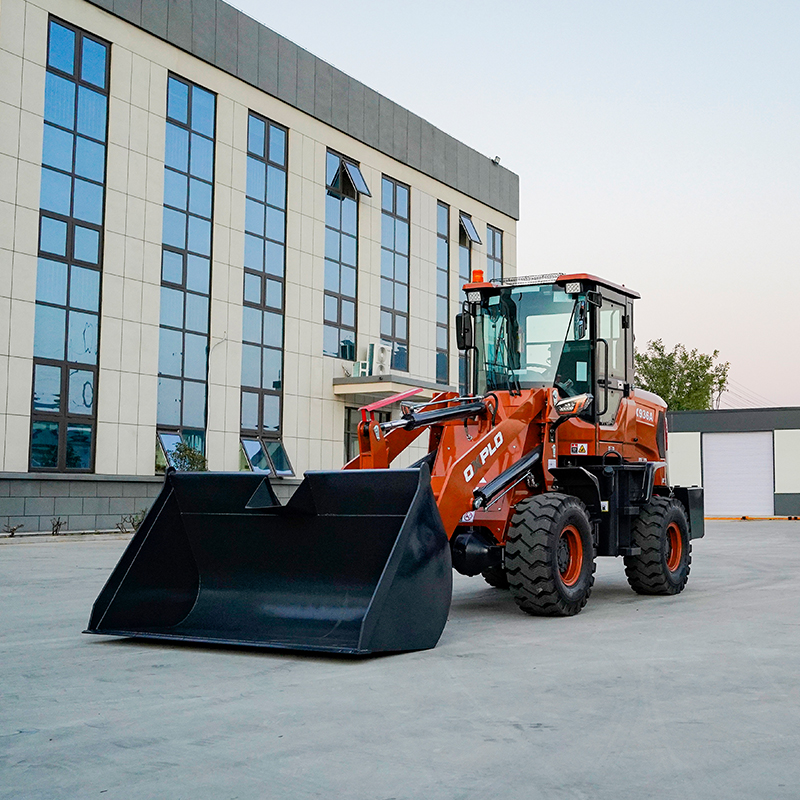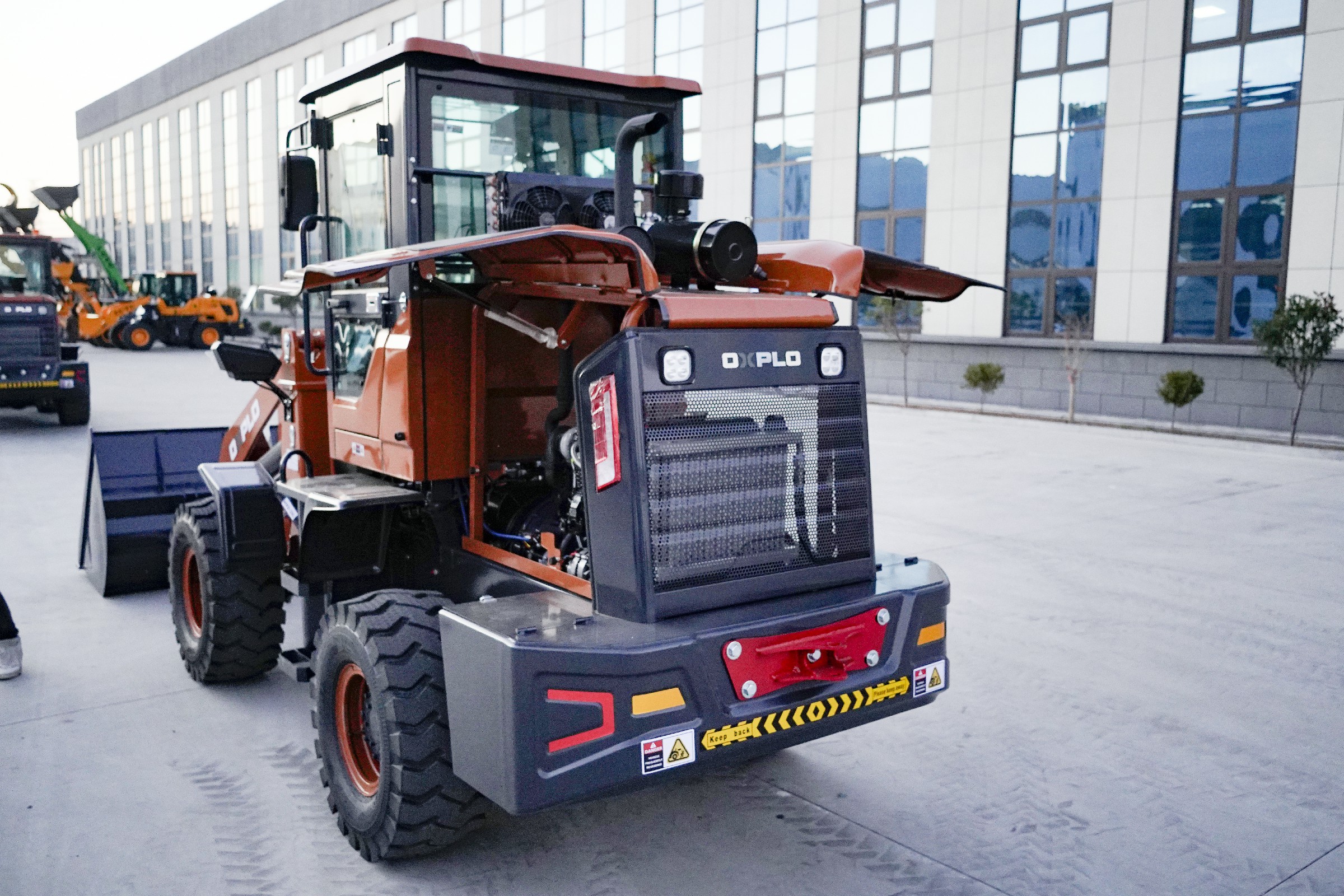Wheel loading oil brake and air brake features
2024-02-01
The brake system of wheel loader is mainly air brake and oil brake two ways, that in the first purchase of wheel loader, we often do not understand the difference between the two brake methods, OXPLO as a professional loader manufacturer, can give you a more professional explanation, now let's understand the characteristics of the two brake methods and maintenance methods.

Oil brake features
1. High braking force: The oil brake system can provide high braking force, suitable for large loaders or applications requiring high braking force. This allows the driver to slow down or stop the machine faster.
2. Fast response speed: the hydraulic transmission speed is relatively fast, so that the oil brake system has a fast response speed. When the driver presses the brake pedal, hydraulic oil is quickly pushed to the brake cylinder, applying braking force.
3. Stability: The oil brake system is usually relatively stable during the braking process, which can achieve a stable braking effect, and the braking performance is also relatively stable for long-term braking and high temperature conditions.

Maintenance of oil brake
1. Replace brake oil regularly: brake oil will gradually be polluted by moisture and impurities during use, affecting its performance. Therefore, according to the manufacturer's recommendation, the brake oil needs to be changed regularly to ensure the normal operation of the system. The frequency and method of changing brake oil should be operated according to the knowledge of the manufacturer.
2. Check the hydraulic system: check the status of the hydraulic system regularly, including hydraulic pump, brake cylinder, brake and other components. Make sure they are not leaking, worn, or otherwise damaged and that they are working properly. If any problems are found, the damaged parts should be repaired or replaced in time.
3. Pay attention to the wear of the brake: the brake is an important part of the oil brake system, and frequent use will lead to wear. Check the wear degree of the brake regularly, and if the wear is excessive, the brake lining or brake disc should be replaced in time
4. Maintain the seals of the hydraulic system: the seals of the hydraulic system need to be kept in good condition to prevent liquid leakage. Check the seals regularly, and replace them in time if they are found to be damaged or aging.
5. Pay attention to the cooling of the brake: When the brake is working at a high load or for a long time, the brake may produce a higher temperature. Make sure the brake cooling system is working properly, such as cooling fan or cooler. Overheating may affect the braking effect and even lead to reduced braking force.

Characteristics of the air brake
1. Simple structure: The gas brake system is simpler in structure than the oil brake system, usually composed of a gas pressure source, gas pipe and gas brake components. This makes the air brake system easier to install and maintain.
2. Lower braking force: Compared with the oil brake system, the air brake system usually provides lower braking force. This makes the air brake system suitable for small to medium loaders or applications requiring lower braking force.
3. Low maintenance costs: The air brake system does not require regular replacement of brake oil because it does not use hydraulic oil, which reduces maintenance costs and makes it easier to keep the system clean and free of impurities.

Maintenance of air brake system
1. Check the air pressure source regularly: the normal operation of the air brake system requires sufficient air pressure. Periodically check that the air pressure of the air pressure source (such as the air pressure tank) is normal to ensure that the air pressure source is not leaking or other problems.
2. Check air pipes and connectors: Check the status of air pipes and connectors regularly to ensure that they are not cracked, aged or loose. If any problem is found, the damaged air pipe or connector should be replaced in time.
3. Check the air brake components: regularly check the wear of the air brake components (such as the air brake drum or the air brake disc). If excessive wear is found, the air brake lining or brake disc should be replaced in time.
4. Maintain the cooling system of the brake: When the brake is working at a high load or for a long time, the brake may produce a high temperature, so as to ensure that the cooling system of the brake works normally, such as the cooling fan or cooler. Overheating may affect the braking effect and even lead to reduced braking force.
5. Check brake performance regularly: Check brake performance regularly to ensure that brake force and response time meet the requirements. If the braking effect is found to be poor, repair or replace the damaged parts in time.

As can be seen from the above, the braking force of the two braking methods is different, and there are certain differences in daily maintenance. I hope this article can help you understand the oil brake and air brake, so as to choose a more suitable loader for yourself. Of course, you can also contact us, OXPLO has a professional technical team. We can recommend the most suitable model for you according to your work needs.




